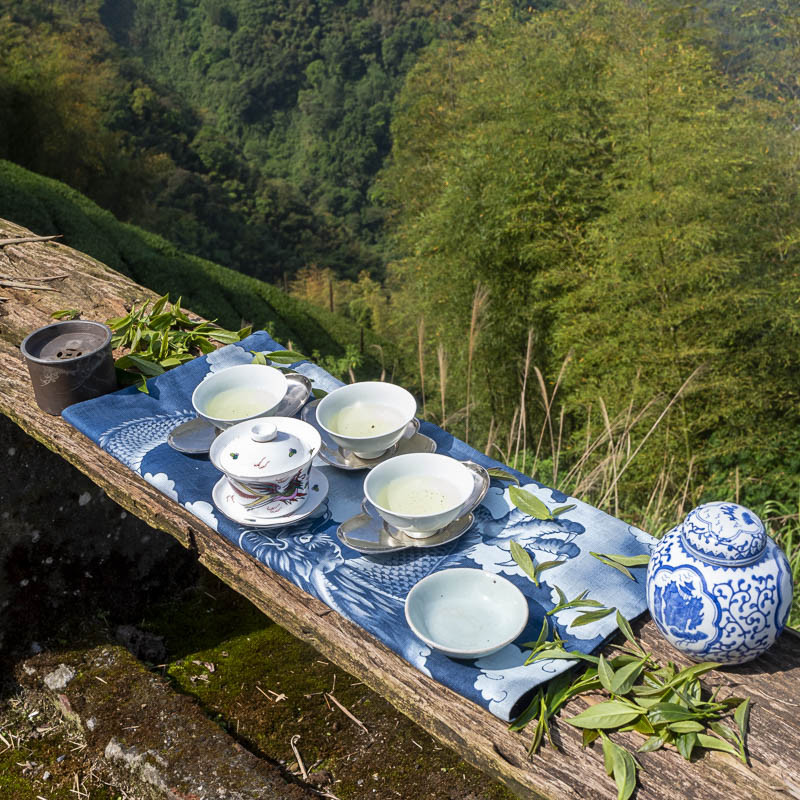Cultivar: Qingxin Oolong
Harvested: by hand on May 4th, 2024. Day 2 of this plantation's harvest.
Origin: Yang Keng section, Shan Lin Xi (1300 m)
Process: Lightly oxidized, rolled Oolong, dried.
1. The view
The dry leaves are rather small with various green colors. The brew has a lighter and fresher color than on Day 1. The open leaves appear in a darker green color. This is a sign of a lighter oxidation level.
2. The scents
The dry leaves have fragrances ranging from bamboo forest, pine, flowers and fruits. The brew features lots of fresh, high mountain fragrances. There's even a light note of marshmallow!
3. The taste
The taste is pure, zesty and elegant. It coats the palate, triggers salivation and prolongs the aftertaste with a pleasant sweet and lightly astringent taste. It tastes more refined.
Conclusion: These Oolong leaves come from day 2 of the harvest from this well managed plantation. We can see this with the presence of lots of small leaves and buds after the harvest. Why? Because this preserves strength for the trees not to be completely emptied of leaves. Besides, the farmer is only harvesting his plantation in spring and winter. This is also helping to use less (organic) fertilizer and have more concentrated aromas in the leaves. As for the difference between day 1 and 2, it's also due to the tea making process. The result is never exactly the same. There was less shaking of the leaves for this second day batch. That's why the oxidation level is lighter and produces fresher aromas. The difference shows how a more traditional process will create Oolongs with distinctive character. I love them both!










